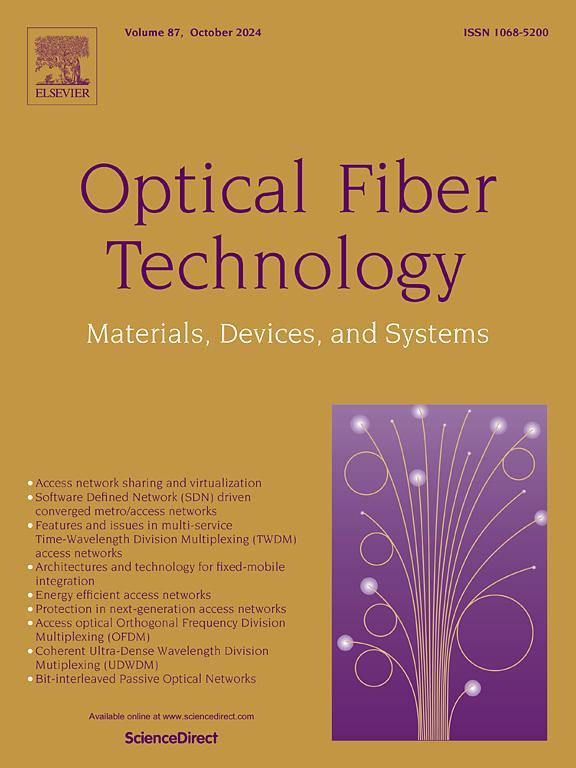Stability monitoring of deep soil in slope based on local strain and continuous vibration information analysis
IF 2.7
3区 计算机科学
Q2 ENGINEERING, ELECTRICAL & ELECTRONIC
引用次数: 0
Abstract
Slope stability is crucial for the safe operation of downstream highways and railroad traffic lines, and the stress state of deep soil body is an important index to reflect the stability of slopes. Environmental vibrations can cause redistribution of internal stresses within slopes, making them one of the primary causes of slope instability. To gain a clearer understanding of internal stress distribution and vibration response within slopes, this paper proposes a monitoring method for the stability of deep soil in slopes based on local strain and continuous vibration optical fiber sensing technologies. Firstly, a fiber Bragg grating-optical fiber vibration sensor packaged by FRP (Fiber Reinforced Plastics) for local strain and continuous vibration monitoring was developed and its sensing performance was experimentally investigated, and then the sensor was applied to a slope to carry out slope stability monitoring. The research results show that the strain sensing coefficient and the flexural sensing coefficient are 1.24 pm/με and 2.07 pm/cm respectively, and the FBG-DVS sensor can effectively measure the displacement distribution of deep soil in slopes and the vibration information generated by the expansion of cracks. This method can provide early warning of disasters such as slope collapse, providing a scientific basis for the safe management of slope engineering.
基于局部应变和连续振动信息分析的边坡深部土体稳定性监测
边坡稳定性对下游公路、铁路交通线路的安全运行至关重要,而深层土体的应力状态是反映边坡稳定性的重要指标。环境振动会引起边坡内部应力的重新分布,使其成为边坡失稳的主要原因之一。为了更清晰地了解边坡内部应力分布和振动响应,本文提出了一种基于局部应变和连续振动光纤传感技术的边坡深部土体稳定性监测方法。首先研制了一种用于局部应变和连续振动监测的光纤Bragg光栅- FRP封装光纤振动传感器,并对其传感性能进行了实验研究,然后将该传感器应用于某边坡进行了边坡稳定性监测。研究结果表明:FBG-DVS传感器应变感测系数和弯曲感测系数分别为1.24 pm/με和2.07 pm/cm,能有效测量边坡深部土体的位移分布和裂缝扩展产生的振动信息。该方法可为边坡垮塌等灾害提供预警,为边坡工程的安全管理提供科学依据。
本文章由计算机程序翻译,如有差异,请以英文原文为准。
求助全文
约1分钟内获得全文
求助全文
来源期刊

Optical Fiber Technology
工程技术-电信学
CiteScore
4.80
自引率
11.10%
发文量
327
审稿时长
63 days
期刊介绍:
Innovations in optical fiber technology are revolutionizing world communications. Newly developed fiber amplifiers allow for direct transmission of high-speed signals over transcontinental distances without the need for electronic regeneration. Optical fibers find new applications in data processing. The impact of fiber materials, devices, and systems on communications in the coming decades will create an abundance of primary literature and the need for up-to-date reviews.
Optical Fiber Technology: Materials, Devices, and Systems is a new cutting-edge journal designed to fill a need in this rapidly evolving field for speedy publication of regular length papers. Both theoretical and experimental papers on fiber materials, devices, and system performance evaluation and measurements are eligible, with emphasis on practical applications.
 求助内容:
求助内容: 应助结果提醒方式:
应助结果提醒方式:


